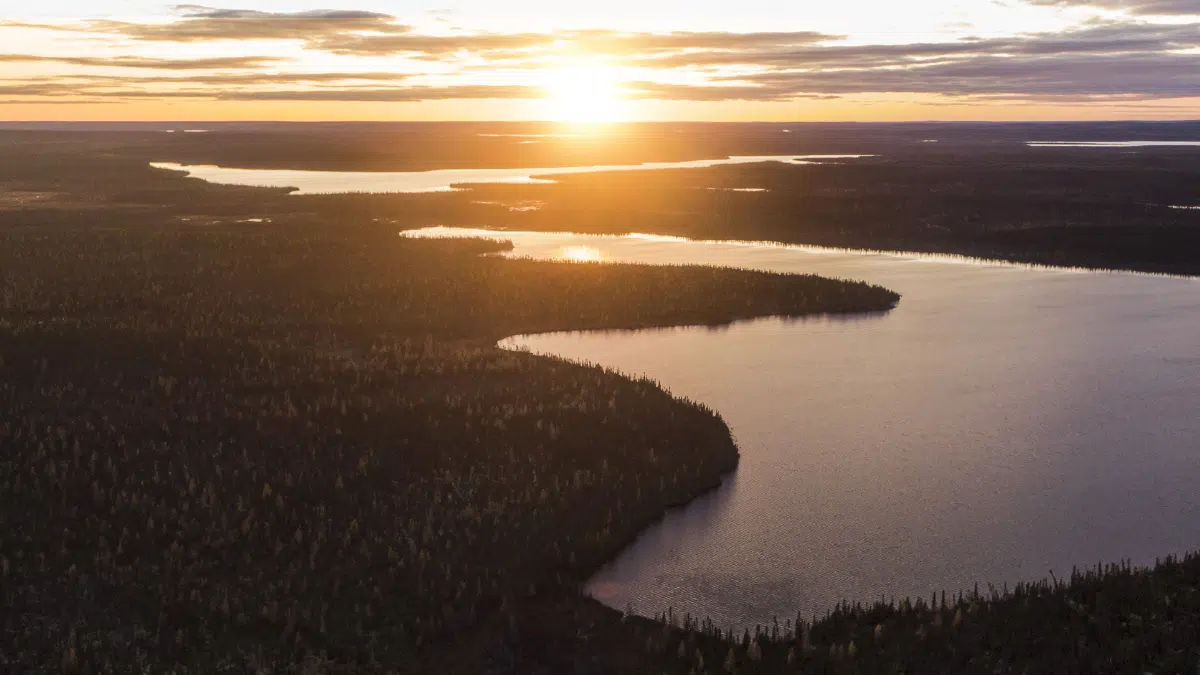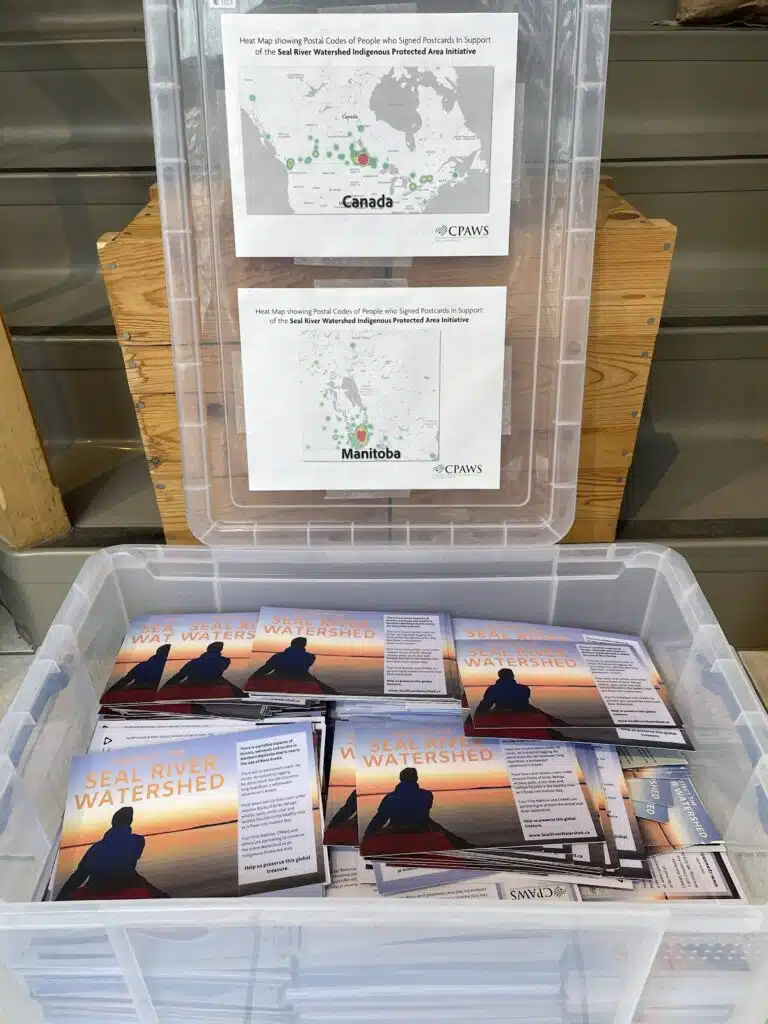
by Mira Oberman
Director of Communications and Public Programs, CPAWS Manitoba
Four First Nations have secured interim protection for the Seal River Watershed, a pristine wilderness as vast as Nova Scotia.
The joint announcement by the Seal River Watershed Alliance and the governments of Manitoba and Canada on January 18, 2024 is a key step towards permanently conserving the watershed as an Indigenous Protected Area.
“This is a monumental moment for nature and reconciliation in Canada,” said Ron Thiessen, Executive Director of the Manitoba Chapter of the Canadian Parks and Wilderness Society (CPAWS Manitoba).
“The Seal River Watershed is one the last great wild spaces on our planet. We are grateful to the members of the Seal River Watershed Alliance for their leadership in protecting this global treasure.”
At 50,000 square kilometres, the Seal River Watershed constitutes 8% of Manitoba. Protecting the Seal River Watershed will help Manitoba achieve its goal of expanding protected areas from 11% of the province today to 30% by 2030.
A Global Treasure
CPAWS Manitoba is honoured to have been a partner in the initiative since the initial discussions to protect the watershed began.
“The vast beauty of the Seal River Watershed is awe-inspiring,” Thiessen said. “Every stream and river flows freely, as nature intended it. There are no dams. No mines. No hydro lines. There aren’t even any permanent roads. What you find instead is an incredible abundance of wildlife like caribou, birds and polar bears roaming unhindered across boreal forest, wetlands and tundra.”
This is what most of the world looked like at the turn of the last century when industrial development was rare, electric lighting was for city folk, and just 15% of the world’s land area was used for agriculture, Thiessen said.
Today, a whopping 75% of the planet’s land area has been altered by human activity. Most of the natural spaces that remain are isolated and fragmented. If you were to parachute into the middle of 70% of the world’s forests, you’d land within one kilometre of the forest edge.
The pace of wilderness loss is staggering, Thiessen added. The world lost 1.9 million square kilometres of wilderness — an area the size of Mexico — from 2000 to 2013.
Wilderness spaces are now so few and far between that a 10,000-square-kilometre area with “minimal” levels of development is classified as “globally significant.” The Seal River Watershed is five times that size and is 99.97% intact.
Join us in thanking the Seal River Watershed Alliance for their efforts to preserve one of the last great wild spaces on our planet.
Tell them how much nature means to you with our easy form.
Significant Public Support

The initiative has drawn significant public support both within Manitoba and across Canada.
A resounding 83% of Manitobans supported the Alliance’s efforts to conserve the Seal River Watershed according to a Probe Research Poll.
More than 19,000 CPAWS supporters have sent emails and signed postcards urging the Premier of Manitoba to work with the Alliance.
“There are few places left on the planet where nature continues to operate unconstrained by pollution and human development,” Thiessen said. “We are so grateful to the Seal River Watershed Alliance for their efforts to protect the global treasure that is their home.”
Advancing Reconciliation

An Indigenous Protected Area supports sustainable and culturally appropriate uses while conserving ecosystems and biodiversity.
Indigenous governments have the primary decision-making role in managing lands and waters in an Indigenous Protected Area.
The federal government has pledged to support the development of “many” Indigenous Protected Areas as it strives to help Canada advance reconciliation, fight climate change and meet its commitments to protect 30% of our lands and fresh waters by 2030.
“Respecting the sovereignty and leadership of Indigenous nations and supporting Indigenous-led conservation will go a long way toward ensuring a healthy future for nature,” Thiessen added.
“Supporting Indigenous-led conservation is an essential part of reconciliation and our best opportunity to reach the target of protecting 30% of lands and waters in Canada.”
What Is Interim Protection?
Interim protection is a legal measure that is frequently used to conserve lands and waters during the lengthy process of establishing a permanently protected area.
It prohibits landscape-altering activities like mining, logging and hydrological development while local communities and governments work together to determine the best way to steward the landscape.
The use of interim protection is also helpful to industry as it provides guidance about future plans for the areas. This allows industry to focus exploration activities on more viable locations.
Help ensure the provincial and federal governments continue to work with Indigenous leaders to permanently protect the 50,000 square kilometre Seal River Watershed.
Tell them how much nature means to you with our easy form.
For more information please visit SealRiverWatershed.ca or read the joint press release.
– Thanks in part to the National Audubon Society for making this blog possible. CPAWS greatly appreciates its support of our boreal conservation efforts in Manitoba –
